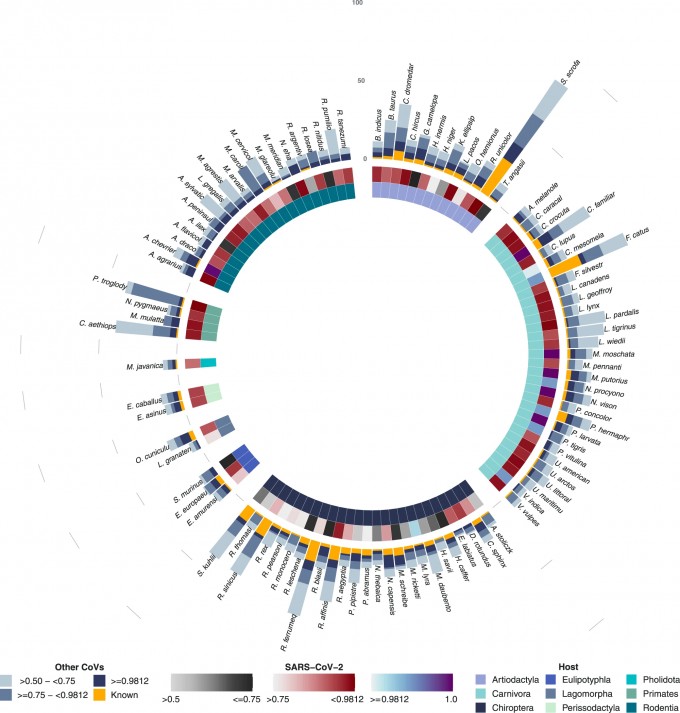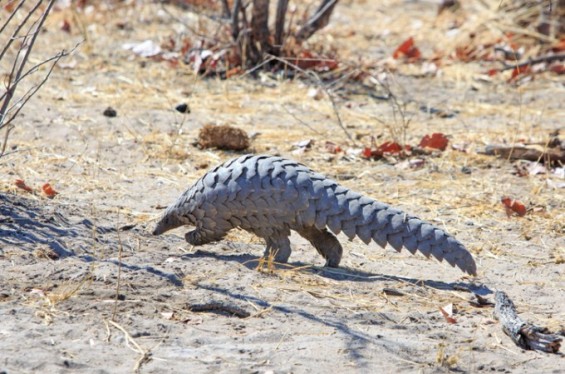This is the appearance of Malay pangolin, designated as the intermediate host of Sascoronavirus-2, which causes Corona 19. As a result of selecting the host candidates for Corona 19 with artificial intelligence (AI), it is predicted that in addition to pangolins, various candidates, such as hedgehogs, European rabbits, and dromedaries, can create the Corona 19 mutant virus. Provided by Getty Image Bank
–
–
Artificial intelligence (AI) predictions show that there are 30 times more potential mammalian hosts that can cause new mutations in the novel coronavirus infection (COVID-19, Corona 19) than has been identified to date. In addition to animals designated as hosts of the Corona 19 virus such as bats, pangolins, and musk hometown, hedgehogs, European rabbits, and dromedaries were selected as potential candidates.
Maya Warder, a researcher at the Institute of Infection Veterinary and Ecological Sciences at the University of Liverpool, UK and a researcher at Marcus Blagrove, predicted the relationship between 411 coronavirus species and 876 potentially hostable mammals through AI Announced in’.
New coronaviruses appear through various processes such as mutation and recombination. Double recombination occurs when two or more types of coronavirus infect animals at the same time and then viral genetic material is mixed in the body. Recombination is likely to be the cause of the discovery of a new coronavirus in bats living with multiple viruses or the process of passing through an intermediate host. The research team predicted a mammal that would become a potential recombinant host by learning the genetic information of the coronavirus and the host infected with it.
As a result, there were a total of 4438 species associated with coronavirus infecting mammals. The possibility of infection between 300 mammals and 204 coronavirus species has been revealed. Of these, 115 mammalian species have not been reported to have previously been associated with coronavirus. One coronavirus species can infect an average of 12.56 mammals.

Among the mammals analyzed by the research team, 126 mammals with a 50% or higher chance of contracting COVID-19 were identified. If the likelihood of infection is 50%, it is black, if it is 75%, it is red, and if it is 98% or more, it is spread out in blue. The probability of infection with other coronaviruses was compared to determine the possibility of a recombinant host. Provided by Nature Communications
–
–
Mammals were found to contract an average of 5.55 coronavirus species. Of these, it was found that 40 times more recombinant host mammals are likely to be infected with four or more coronaviruses than before. It was also predicted that 126 species of mammals could be infected with the Corona 19 virus. “This indicates that there may be 30 times as many host species that are currently known to create a new virus from the Corona 19 virus,” the research team explained.
Tube bats, presumed to be the host of Corona 19, were found to be infected with 68 coronavirus species. The pangolin, which is also referred to as one of the intermediate host candidates, was also able to infect 14 coronavirus species. The Asian civet cat, which is believed to be the host of the severe acute respiratory syndrome (SARS) virus, has been shown to be a host of 32 coronavirus species. In addition, hedgehogs, European rabbits, and dromedaries appeared as animals that can contain the Corona 19 virus and other viruses.
The research team hypothesized that as data on the association between the coronavirus genome and the host is small, the prediction may be uncertain. However, it is expected that it can help to identify high-risk species in advance and notice the emergence of new viruses. “The spread of viruses to humans tends to be linked to human activities such as wildlife trade,” said Warder. “As it is impossible to investigate all animals, our approach will help to prioritize.” Said.
– .

![[서울신문] ‘Wow~heung’ Heungkuk Life 4 consecutive losses… Kim Yeon-kyung struggles alone [서울신문] ‘Wow~heung’ Heungkuk Life 4 consecutive losses… Kim Yeon-kyung struggles alone](https://img.seoul.co.kr/img/facebook.png)
